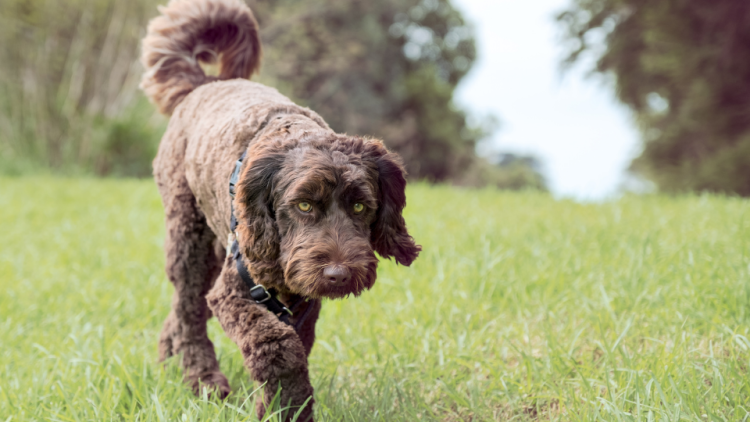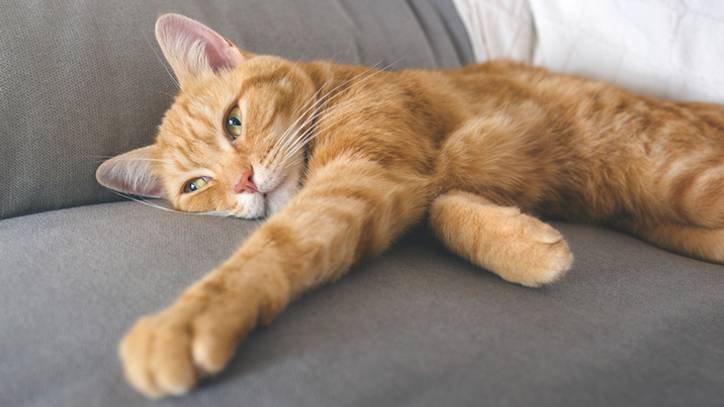Sadly, anxiety in our pets may be as prevalent as it is in humans! Dogs and cats are wonderfully social and highly intelligent creatures, two reasons why we love them so much. But with that complex nature comes many challenges. We can all help our furry friends feel calmer by recognizing the signs of stress, anxiety, and fear.
Anxiety can cause pets to exhibit many unwanted behaviors. Fortunately, if we can identify potential symptoms, we can take steps to help alleviate stress in our pets and improve their behavior.
What Causes Anxiety for Our Pets?
Anxiety in pets has nearly as many causes as human anxiety, which are similar in many ways. The three biggest fears pets experiences are fear of change, fear of being alone, and fear of the unknown. Some common sources of anxiety in our pets are:
- Being alone (separation anxiety)
- Hearing loud noises, such as fireworks or thunderstorms (the unknown)
- Changes in the home (changes)
- Schedule disruptions (changes)
- A new pet in the home (changes)
- Vet Visits (strong memories of unfavorable things in the past)
What Are the Indicators of Anxiety in Pets?
As you will see from the list below, many symptoms of anxiety or fear can have multiple causes. For instance, barking, drooling, or panting can indicate many different things depending on the situation (e.g., excitement, hunger, exhaustion).
In dogs and cats, common signs of anxiety or fear include:
- Whining or barking
- Pacing
- Scratching
- Chewing
- Drooling
- Panting
- Urinating and defecating in the house
- Shaking
- Digging
How to Help Our Pets Become Less Anxious
Whether it’s a recent change in behavior or a problem behavior that has existed for a long time, anxiety may be the culprit. It is always a good idea to consult your veterinarian to rule out any potential medical issues. In the meantime, here are some tips and solutions to help reduce pet anxiety.
Spend More Time Together
If possible and don’t hold back on physical contact. Nothing can soothe an anxious dog or cat more than its owner’s touch. If you notice signs of anxiety in your pet, try to nip them in the bud as soon as possible by picking them up, cuddling on the couch, or giving them a long petting session. Physical contact relieves anxiety in humans and pets, so bring the love!
Stick to a Routine
Both cats and dogs thrive on a consistent schedule. If possible, mealtime, walk time, playtime, and any other activity should occur simultaneously every day. This will help your pet anticipate what is going to happen next, which can help them feel more confident, especially if they suffer from separation anxiety.
Exercise and Play
Anxiety can cause pets to have excess energy, which, if not channeled, can result in destructive behaviors, such as tearing apart your sofa or scratching up your door. Pets that are mentally and physically stimulated will produce stress-relieving endorphins that can help them feel comfortable and calm, so it’s important that they get exercise throughout the day. Play can take the form of a long walk, one-on-one time, or even independent play with engaging toys. Playtime is also a great opportunity to spend some quality time with your pet, giving them lots of affectionate physical contact and verbal praise.
Try Supplements
CBD, or cannabidiol, is a compound found in cannabis and hemp. Pet CBD is commonly used for its anti-inflammatory properties, cardiac benefits, anti-nausea effects, appetite stimulation, anti-anxiety impact, and possible anti-cancer benefits. CBD Oil binds and stimulates the serotonin receptors in your pet’s nervous system resulting in a calming and mood-boosting effect. It doesn’t matter if your dog suffers from general anxiety, thunderstorm anxiety, or separation anxiety; pet CBD Oil will work wonders for them.

Just like humans, our pets can also benefit from CBD. CBD can help to ease anxiety and stress, relieve pain, and promote a sense of overall well-being. However, it’s important to make sure that you’re giving your pet the right dose of CBD. The amount of CBD that you give your pet will depend on a number of factors, including their weight, age, and health condition. For example, a larger dog will need a higher dose of CBD than a smaller dog. You should also start with a lower dose and increase gradually until you find the right level for your pet. Always check with your vet before starting your pet on CBD, and make sure to get a high-quality product from a reputable source. With the right dose of CBD, your pet can enjoy all the same benefits that you do.
Calming Treats
Calming treats are very sought after among pet owners, and more and more pet parents are turning to them to calm their anxious animals. The best calming treats contain a combination of powerful ingredients such as CBD and CBDA. While CBD comes from grown and cured cannabis plants, CBDA occurs in plants that are still growing. Each of these compounds has a variety of benefits, including anti-anxiety and depression properties. Pet CBD can help your pet feel calm and content.
Change Their Food
Most dog and cat parents today are concerned about what their pets eat, but if you haven’t paid much attention to your pet’s diet or are giving them cheap/low-quality food, try switching to a higher protein and more balanced diet. Sometimes although rare, your pet may present anxiety symptoms if their body does not have the proper nutrients it needs.
Summing It Up
Anxiety is a very real, natural emotion that many pets experience. It is difficult to see our furry friends in distress, but these feelings are normal reactions to the triggers that cause them to begin with. Fortunately, you can help manage those emotions by spending time with your pet, sticking to a routine, giving them lots of exercise, and giving pet CBD a try!







